ENGO Patches are a great blister management product that I recommend frequently. However, they can’t fix every type of foot pain. Here's an overview of the limitations of ENGO Patches.
1. ENGO Patches will not help pressure-related pain
ENGO Patches minimise friction. The blue polytetrafluoroethylene (PTFE) surface is responsible for this low friction. It's slippery - that's the whole point of low friction. Friction is a parallel force, in contrast to pressure, which is a perfendicular force.
So ENGO Patches have no impact of pressure. If pressure is the problem, you'll need to implement a pressure reduction strategy. Depending on where your blister is and what's causing it, that could be better shoe-fit, a good lacing technique, a toe-prop, a cushioned insole or pressure deflection insole, an orthotic an alteration to your gait, or many other things. If you're stuck and not sure what your blister needs or how to implement it, a podiatrist can help.
By the way, ENGO Patches don't increase pressure. Adding them into your shoe won't cause more pressure because they're only 0.38 of a millimetre thick.
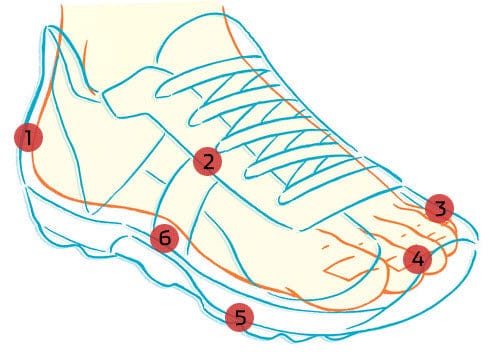
ENGO Patches can not change pressure (Image credit)
2. ENGO needs a dry surface to adhere to
Like most adhesive products, the receiving surface must be dry to attain adhesion. Once that initial adhesion is achieved, the patch adhesive won’t be adversely affected by small amounts of moisture of perspiration. No matter how hot, active and sweaty your feet get, the patches will stay stuck! Moisture can't soak through the patch - it's hydrophobic.
3. However, the adhesive might not handle waterlogging
Once ENGO Patches have been in place for several episodes of walking or running, a strong adhesion is achieved. After that, if your shoes become saturated or waterlogged, the patch may come unstuck. Waterlogging examples could include:
- Putting your shoes in the washing machine (the soap will almost certainly loosen the adhesive)
- Wading through deep puddles, swamps and river-crossings
- Excessive body run-off (for example, prolonged or heavy rain, tipping water over the head at running event drink stations, the swim transition of triathlon events)
- The patch is unlikely to detach immediately. But the adhesive's life expectancy may understandably be reduced. Particularly if you don't allow your shoe to fully dry before wearing it again. Once a good initial adhesion is achieved, the adhesive will cope with some water. But you should be prepared to replace the patches after circumstances like the above, once the shoe is completely dry.
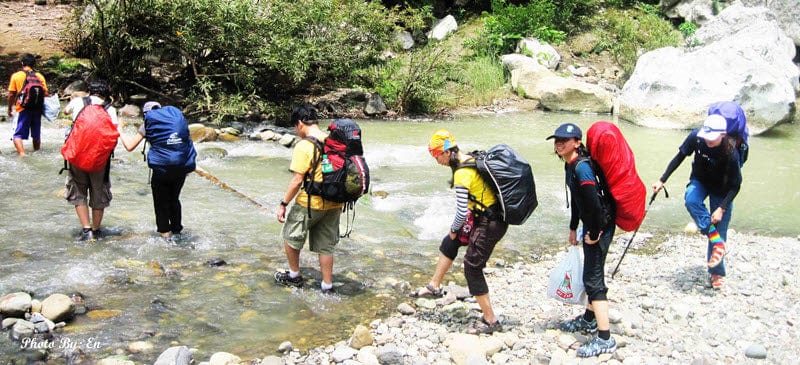
Waterlogging may compromise the adhesion of your ENGO Patches (Image credit)
4. Waterproofing compromises adhesion
Sometimes, patches just don't seem to stick very well, right from the start. Or, they come off within the first few uses. The problem is almost always:
- with hiking boots - although not all hiking boots have the problem.
- the boots are almost always new.
- and this almost never happens to patches applied to the insole, but rather the inner lining of the shoe. For example, around the back of the heel
ENGO's American manufacturers suspect this is due to either:
- The use of waterproofing lining materials which don't accept the adhesive. An example of this is Gore-Tex.
- Physical or chemical contaminants from manufacture. Often, the second attempt of patch adhesion works fine. Presumably, the first patch removed the debris from the shoe surface,
To minimise the chance of this happening to your ENGO Patches, rub the area of the shoe where you're about to apply the patches to with a dry towel (or something similarly abrasive). This will remove any loose contaminants and allow for best possible adhesion. Be sure to follow the application instructions by:
- Minimising the amount you touch the adhesive of the patch
- Press the patch on firmly. Maintain pressure for 30 seconds to every area of the patch. Concentrate particularly on the edges where your sock is most likely to catch the patch as your foot slides into your shoe.
- Put your shoes on immediately and wear them around the house for 30 minutes. Your body warmth will make the adhesive more tacky and the functional pressure will help press the patches down.
- Be very careful not to catch the edge of the patch with your sock as you slip your foot into your shoe. Use your fingers to guide your foot in, or a shoehorn if necessary, on the first few occasions. This becomes less critical over time as adhesion becomes stronger with wear.
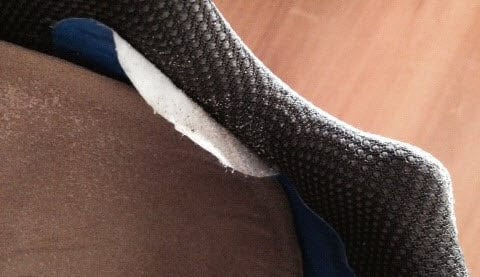
This ENGO Patch is coming loose because not enough care has been taken when sliding the heel down into the shoe.
5. Some patches had a fault called 'delamination'
An uncommon fault existed with some patches pre-December 2016 where the patch falls off the shoe after one or two wears, but leaves the majority of its adhesive on the shoe. It looks something like this (below). Unfortunately, faulty patches don't look any different to unaffected patches. Reports were rare at a rate of 0.068% of patches. If you experience this problem, please complete this form. The American manufacturers believe this fault has been eliminated with the use of new materials. We have been fully stocked with the new patches since mid December 2016.
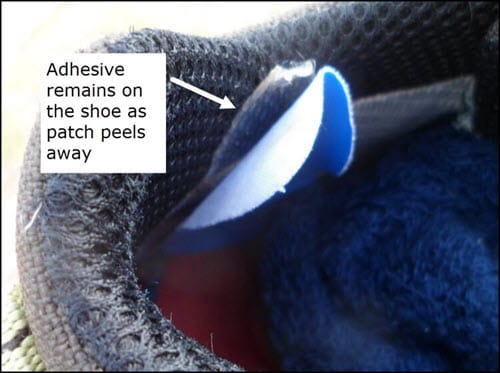
Delamination of the patch's adhesive
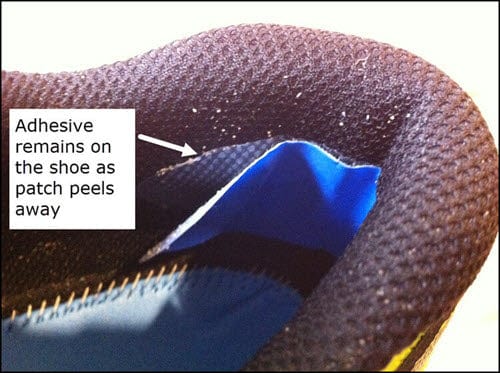
The adhesive delaminates from the patch
6. ENGO Patches need to apply to the shoe, obviously
What we're getting at here is, there are some blisters where ENGO Patches won't help. That is, blisters between your toes. Why? Because there's no shoe surface to apply them to. We do have customers that stick them to toe-socks in extreme situations. But they won’t last the washing machine cycle.








